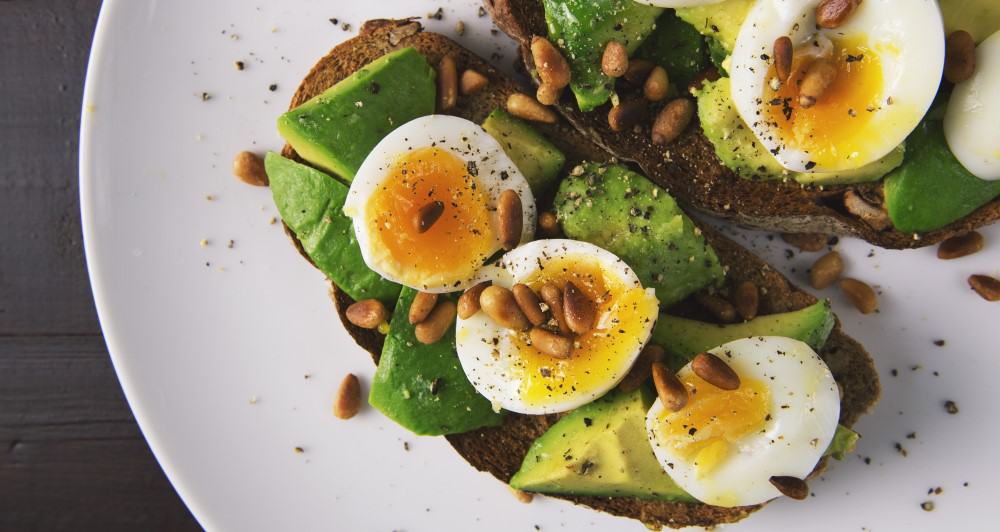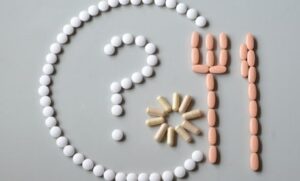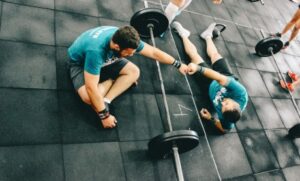Anyone who has ever made a tough diet, going into the single-digit body fat area, knows the problem: Stubborn fat.
A small bastion of body fat still provides resistance despite intense exercise time and greatly reduced calorie intake. It quickly becomes clear to most of them that they will lose a not inconsiderable amount of muscle in order to get rid of these fat deposits as well.
In this article, I’ll give you 7 crucial tips to lose stubborn fat once for all.
What is stubborn fat?
Aiming for stubborn fat and localized fat loss are two different things. I first looked at a localized fat loss as it is important to define what we are talking about here. We are not talking about localized fat loss. Localized fat loss is all about training alone.
Targeting persistent fat includes diet, exercise, and supplementation. Localized fat loss is basically impossible. Targeting stubborn fat is not only possible but also feasible if you know what you are doing.
The first thing you need to know about persistent fat is that it differs physiologically from other fat. Persistent fat has a high density of alpha receptors compared to beta receptors, has higher insulin sensitivity, and is less perfused than regular body fat.
Subcutaneous fat (the fat under the skin) is more persistent than visceral fat (the fat around your organs) or intramuscular fat (the fat in your muscles). The most persistent areas of body fat are the hip, buttocks, and thighs in women and the lifebuoys or love handles in males.

When is stubborn body fat a problem?
At which level does persistent body fat become relevant at all? Basically, people have no real idea when it comes to distinguishing between high body fat and stubborn body fat. I have a large number of clients who talk to me about persistent fat while having 15% or more body fat.
Persistent fat in the abdominal area is the fat you need to lose to turn your 4 ½ pack into a 6 – pack. If I had to sum up the numbers, I would say 10% body fat is the minimum you should have achieved before you should even tackle the subject of persistent body fat.
7 Tips against Stubborn Fat
Here are some strategies that can be implemented to lose stubborn body. In the first place, however, it is important to have a grip on the diet. There are no expected successes if you follow these tips, but the diet is not right.
1. Intermittent fasting.
The reasons were already explained in the course of our articles. More information about Intermittent Fasting can be found here.
2. Increase the activity level
Do cardio units or anything else that burns calories. One of my personal favorites is longer lasting, lower intensity activities such as walks during the 12-16 hour fasting period. There are other reasons why I prefer lower intensity units. They do not affect performance in the gym and can be done daily (compared to, for example, HIIT).

3. Dietary supplements
While I have become “lean” without special dietary supplements, supplements that increase body temperature (Thermogenic) or alpha-2 receptor antagonists, such as Yohimbine, speed up the process.
4. Caffeine
Caffeine is an extremely beneficial thermogenic that stimulates catecholamine release. Drink black coffee while fasting or take caffeine tablets while fasting, with the dose and frequency measured according to your own tolerance. If you are not a frequent coffee drinker, you can already walk through the blankets with 200mg. Anyone who drinks coffee frequently, must or can take up to 400-600mg to feel any effect at all. L-tyrosine may synergize with caffeine, so it can be experimented with. I myself have not achieved any real effect with it, but there are people who swear by it.
5. Yohimbine & Caffeine
A supplement that combines yohimbine and caffeine. The dose here is 0.2 mg/kg body weight. Taking time is just before cardio training during the fasting window or at some point during the fast. For an 80kg heavy athlete that means 16mg yohimbine if it is in the HCL form. Other commercial supplements such as e.g. Meltdown contain 3mg of yohimbine per capsule, so the athlete from the example would take up to 5 capsules daily to get on a similar level.
However, you should be careful here, on the product is mentioned: “Never more than three capsules daily or in one dose”. Personally, I’ve never felt anything negative about increased dosage, but I have to mention this warning if it’s overdone. The best is to start with a low dosage to better assess personal tolerance. Meltdown contains other nutrients that make it more potent and unpredictable, unlike pure yohimbine HCL (for example, 5 capsules of Meltdown may have a greater effect than 15mg of pure yohimbine HCL in terms of effects and side effects).
Important: Keep in mind that insulin cancels the alpha-2 receptor inhibition by the yohimbine. Therefore, it should always be supplemented in the fasted state and never between meals. Since the half-life of yohimbine is relatively short (30 min), one can also test a higher-frequent intake during the fasting window. For example, three receipts, every two hours, until the first meal. In this case, however, I would not start with a dose of 0.2mg / kg because a certain level builds up by the multiple ingestions. A dose of 0.15mg / kg is a good starting point.
6. Strength training during the fasting period
Heavy strength training increases catecholamine levels significantly, with the greatest effect during Lent. Strength training and fasting are both extremes to which the body reacts with increased catecholamine release; In combination, it seems that the effect is synergistic. How can we reconcile everything previously mentioned, including weight training, to get rid of stubborn fat more easily? As hinted at in the past, I’m not a fan of using strength training as a means to create a caloric deficit. I also do not recommend strength training in completely chewed condition, as it is counterproductive to the anabolic effect. But I have found a way to consider all this.
10:00: Training on an empty stomach after taking 10g BCAAs or another amino acid product. This “pre-workout” shake will not count as the beginning of the meal window.
10:00 – 11:00 am: Strength Training: I recommend a workout that follows the scheme of the inverted pyramid, which is my preferred variant. The training consists of high intensity at a low volume. High intensity in training is the key to effective catecholamine release. 2 – 3 sets of 4 – 8 reps for composite exercises and 1 – 2 sets of 8 – 10 reps for assistive exercises (curls, triceps exercise, etc.). No more than 5 exercises per training session.
11:00 – 12:00: After the training, which should last no longer than one hour, the insulin level, which was increased by the intake of BCAAs, has returned to a normal level. Now take the 0.2 mg yohimbine, as well as 30 – 45min light cardio in the form of cycling or e.g. Treadmill at a speed of 5 – 6 km / h (optional with a slight incline). The yohimbine will quickly take effect.
12: 00-13: 00: First meal
7. Carbohydrate Refeeds
Carbohydrate-rich, low-fat refeed meals provide a leptin boost, a hormonal boost and a significant effect on the metabolism rate. For many unfamiliar with Refeeds, it may sound misleading, but it is these Refeeds that can help break a plateau on the decline or get rid of stubborn fat. This can be written and discussed.
Conclusion: 7 Tips against Stubborn Fat
Finally, a note: None of the above strategies is absolutely necessary to become “lean” in the form of a defined six-pack. I myself – as well as many of my clients – have achieved this goal without supplements, cardio or training while fasting.
In the end, the deciding factor is time. There is no shortcut that delivers fast results. Only a handful of possible applicable strategies whose positive effects are difficult to prove theoretically.
If you decide on an approach, think about which least pains you to put into your everyday life. Stay true to yourself and do not leave your path, as this usually leads to a failure of your diet.
Cheers,
Sam




